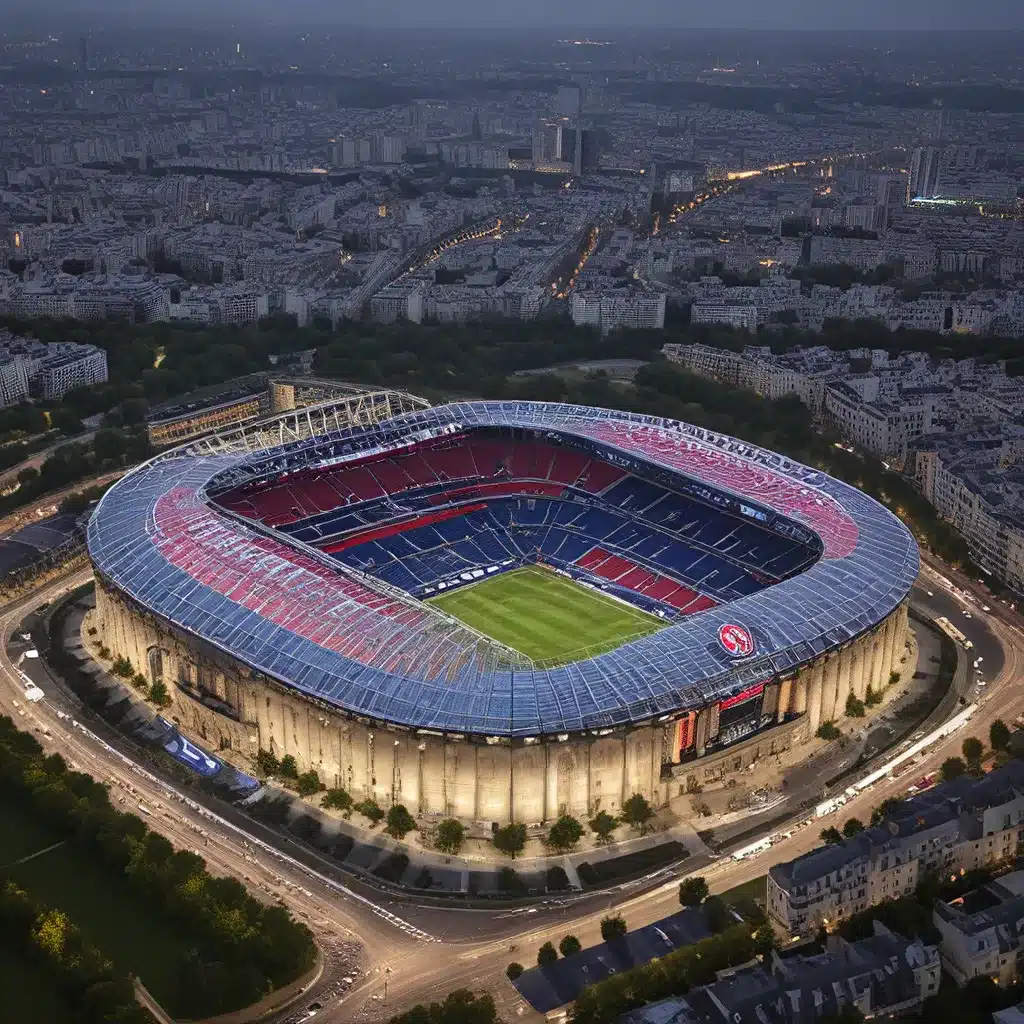
A Storied Stadium in the Heart of the City of Lights
The Parc des Princes, a football stadium nestled in the 16th arrondissement of Paris, France, is more than just a venue for sporting events – it is a landmark of French architecture and a symbol of the city’s rich athletic heritage. As the home ground of Paris Saint-Germain (PSG), one of the most successful and influential football clubs in Europe, the Parc des Princes has witnessed some of the most electrifying moments in the sport’s history.
Tracing its origins back to 1897, the Parc des Princes has undergone numerous transformations, each one reflecting the evolving needs and aspirations of the city it serves. From its early days as a velodrome and multi-purpose sports arena to its current status as a state-of-the-art football stadium, the Parc des Princes has maintained its position as a iconic venue in the world of sports.
The Stadium’s Architectural Legacy
The current iteration of the Parc des Princes, designed by architect Roger Taillibert and artist Siavash Teimouri, was officially opened on May 25, 1972. The stadium’s distinctive concrete ribs or “razors” and its elliptical roof with integrated lighting systems have made it a landmark of French architecture, earning it legal protection as a culturally significant structure.
The stadium’s unique design not only enhances its aesthetic appeal but also contributes to its renowned acoustics. The Parc des Princes is praised for its ability to amplify the roar of the crowd, creating an electrifying atmosphere that is unmatched by many other football venues.
The Parc des Princes: A Legacy of Sporting Excellence
The Parc des Princes has a storied history as the home of both football and rugby teams. It has hosted a wide range of prestigious events, including the 1938 FIFA World Cup, the 1954 Rugby League World Cup Final, and three European Cup finals. The stadium’s rich heritage has made it a beloved venue for sports enthusiasts and a source of pride for the people of Paris.
One of the most significant moments in the stadium’s history came in 1984, when the French national team won the UEFA Euro 1984 final at the Parc des Princes, securing the country’s first-ever European championship title. This victory cemented the stadium’s status as a national treasure and a symbol of French sporting prowess.
The Rise of Paris Saint-Germain
In the early 1970s, the Parc des Princes became the permanent home of Paris Saint-Germain, a football club formed by the merger of Paris FC and Stade Saint-Germain. Since then, PSG has grown to become one of the most dominant and successful teams in French football, winning numerous domestic titles and establishing itself as a force to be reckoned with in European competition.
The club’s strong ties to the Parc des Princes have only deepened over the years. In 2013, PSG reached an agreement with the Paris City Council to extend their stadium lease until 2043, solidifying their commitment to the venue. The club has also invested heavily in renovating and upgrading the Parc des Princes, adding larger and more comfortable seats, expanded hospitality facilities, and modern changing rooms to enhance the matchday experience for both players and fans.
The Future of the Parc des Princes
As PSG continues to rise in prominence on the global stage, the Parc des Princes has become a crucial part of the club’s identity and ambitions. The Qatar Sports Investments (QSI) group, which acquired a controlling stake in PSG in 2011, has expressed a desire to further expand the stadium’s capacity to 60,000 seats, reflecting the club’s aspirations to establish itself as one of the leading European clubs.
However, the future of the Parc des Princes is not without its challenges. Rumors have circulated that QSI may be interested in purchasing the stadium outright, a move that could have significant implications for the venue’s long-term ownership and management. Additionally, the construction of the Stade de France in 1998 has raised questions about the continued relevance of the Parc des Princes as a premier football venue in France.
Conclusion: A Parisian Sporting Gem
Despite the uncertainties surrounding its future, the Parc des Princes remains a cherished and integral part of Paris’ sporting landscape. As the home of Paris Saint-Germain and a symbol of French sporting heritage, the stadium continues to captivate and inspire football fans around the world.
From its architectural elegance to its storied history and passionate fan base, the Parc des Princes is a true Parisian palace – a testament to the city’s enduring love for the beautiful game. As the stadium continues to evolve and adapt to the changing needs of the modern era, it is sure to remain a beloved and iconic destination for sports enthusiasts and cultural enthusiasts alike.

